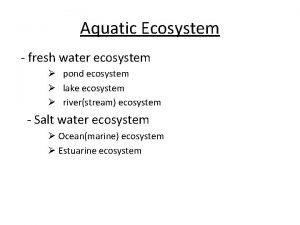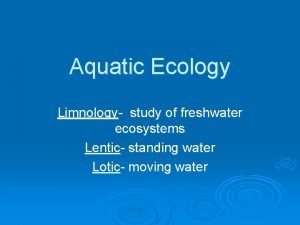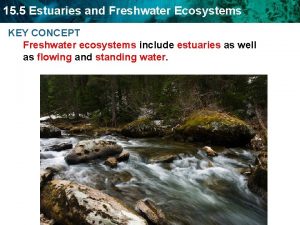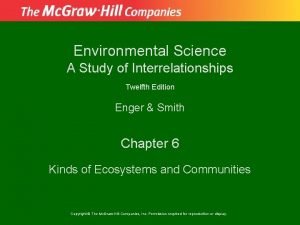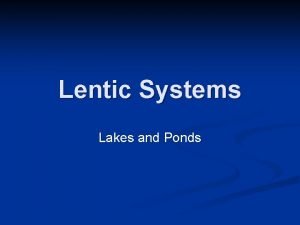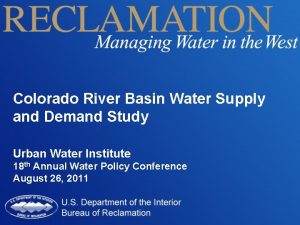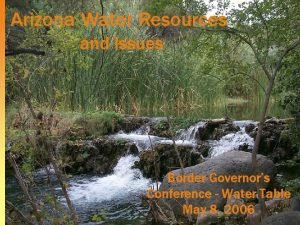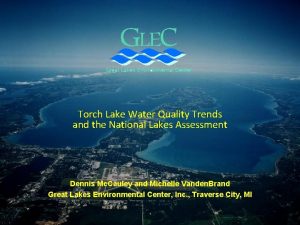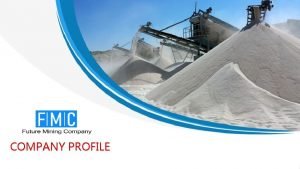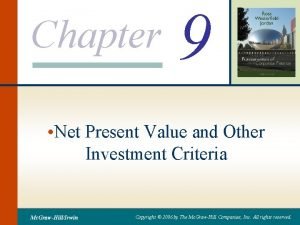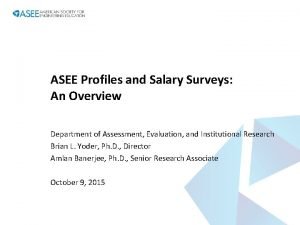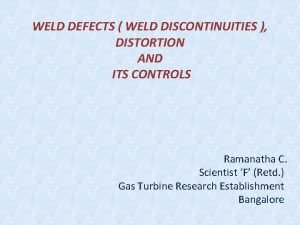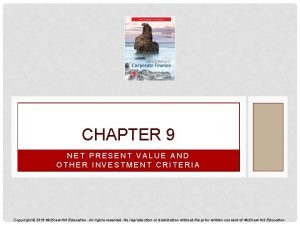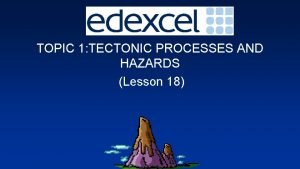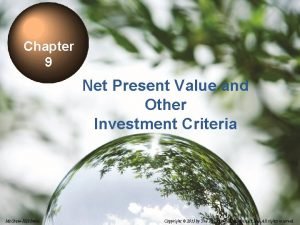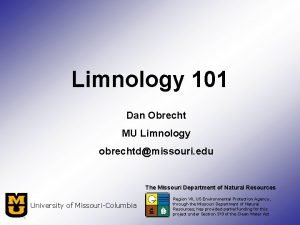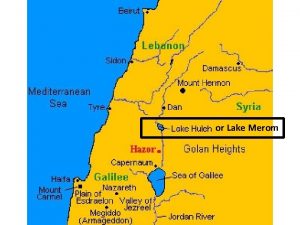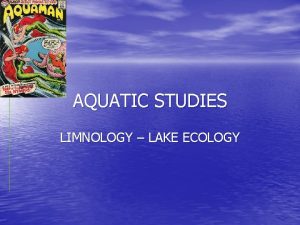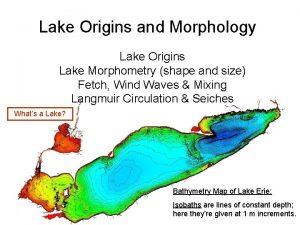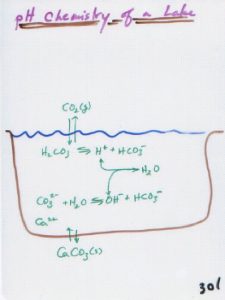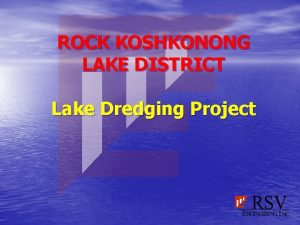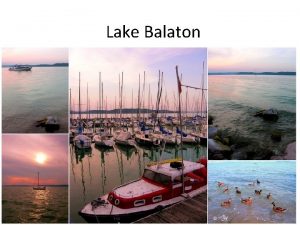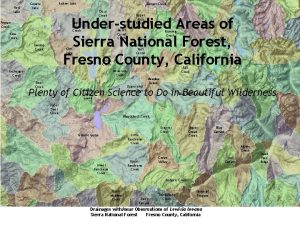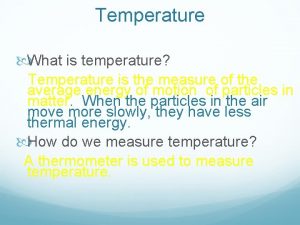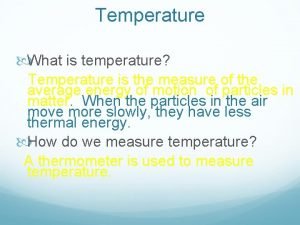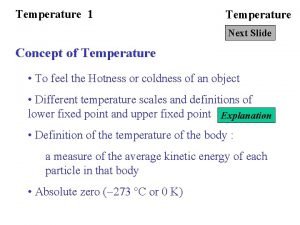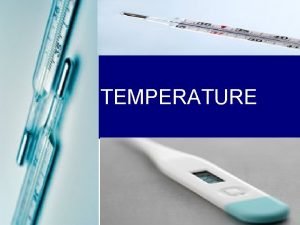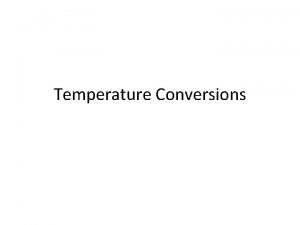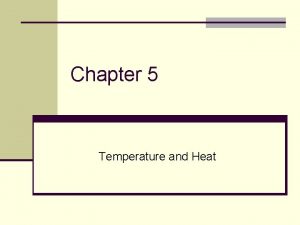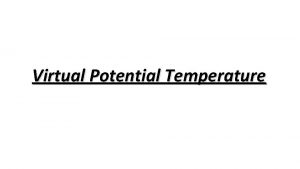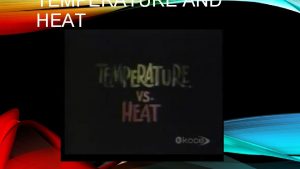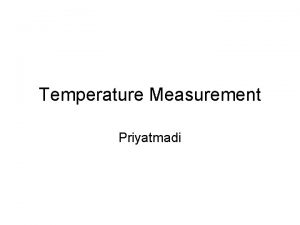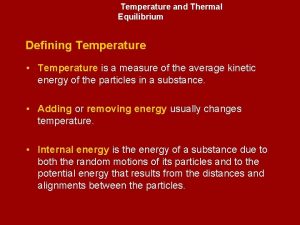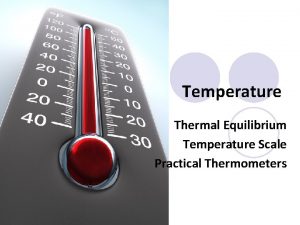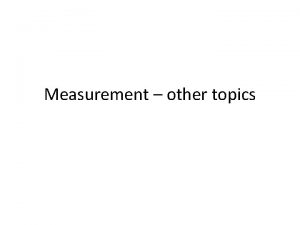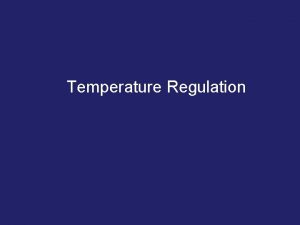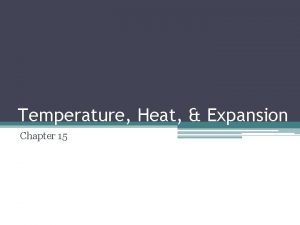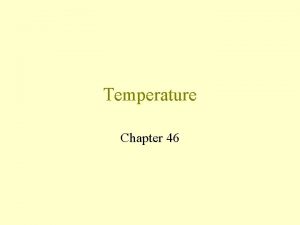Early Limnology Temperature Profiles Lake Zones are dynamic








































- Slides: 40

Early Limnology: Temperature Profiles

Lake Zones are dynamic! Input of heat Mixing forces

The stratification and mixing cycle of an average-sized, temperate lake

Stratification and Mixing

Stratification and Mixing

Stratification and Mixing

Stratification and Mixing

Stratification and Mixing

The Whole Cycle in One Confusing Figure!

Factors that influence stratification pattern • Heating / Density Wind / Waves • Depth • Surface Area • Topography / Location / Exposure

Temperature The Family of Lake Cycles Incident Solar Radiation

The Family of Lake Cycles

Amictic • Perennially ice-covered • Inversely stratified

The Family of Lake Cycles

Cold Monomictic • Water temperature never exceeds 4 C • Ice-covered for most of the year = inversely stratified • One period of free circulation in summer at or below 4 C

The Family of Lake Cycles

Dimictic

The Family of Lake Cycles

Warm Monomictic • • • Circulates once in winter at or above 4 C Directly stratified for the rest of the year Not ice covered

The Family of Lake Cycles

Oligomictic • Stable, direct stratification most of the year • Circulation at irregular intervals (scale of years) during cool periods

The Family of Lake Cycles

Polymictic • Frequent periods of mixing per year • Not ice-covered

Cold Polymictic • • Equatorial, high elevation Hovering around 4 C Intense heat during day (stratification) Intense cooling at night (mixing)

Warm Polymictic • Warm throughout (i. e. , well above 4 C) • Sometimes get intense heating of epilimnion = development of weak stratification.

4 C is IMPORTANT

Holomixis: Circulation occurs throughout the entire water column. Meromixis: Primary water mass never mixes with the lower portion.

Stratification in meromictic lakes • Monimolimnion: deep stratum, high salinity • Chemolimnion: strong salinity gradient • Mixolimnion: upper stratum (i. e. , epi-, meta -, and hypolimnion)

How does the salt get there? • Ectogenic meromixis • Crenogenic meromixis • Biogenic meromixis

Consequences of meromixis • Monimolimnion = Dead Zone • Chemolimnion = Heat Trap

Wavelength Frequency More Blue More Red

Consequences of meromixis • • Hot Lake, north-central WA On top of epsom salt excavation High Mg. SO 4 in monimolimnion Temperature in monimolimnion can get to 50 C!

Why Lake Circulation Matters: Lake Nyos Gas Disaster

Lake Nyos Degassing Project • Pipe is 203 m long and 14. 5 cm in diameter. • Upper end attached to raft and supported by lines to shore.

• Oxygen • Light • Temperature

Patterns along the “river continuum” • Oxygen • Light • Temperature

Temperature along streams

Temperature fluctuations along the streams

Effect of Groundwater on Stream Temperature: Nyack Floodplain, MT

Oxygen along streams • DO in unpolluted, flowing water usually at or near saturation, and concentrations are of little biological significance.
 Insidan region jh
Insidan region jh Tropical climate
Tropical climate How do littoral zones differ from riparian zones?
How do littoral zones differ from riparian zones? Zones of lake ecosystem
Zones of lake ecosystem Lake zones diagram
Lake zones diagram Zone of pond ecosystem
Zone of pond ecosystem Ocean and lake zones
Ocean and lake zones Zones in lake ecosystem and types of organisms present
Zones in lake ecosystem and types of organisms present Oligotrophic lake vs eutrophic lake
Oligotrophic lake vs eutrophic lake Lake powell and lake mead
Lake powell and lake mead Lake powell and lake mead
Lake powell and lake mead Torch lake water temperature
Torch lake water temperature Difference between curie temperature and neel temperature
Difference between curie temperature and neel temperature Difference between curie temperature and neel temperature
Difference between curie temperature and neel temperature Difference between curie temperature and neel temperature
Difference between curie temperature and neel temperature Early cpr and early defibrillation can: *
Early cpr and early defibrillation can: * Transferered
Transferered Character description of scout finch
Character description of scout finch Advantages of capital budgeting
Advantages of capital budgeting Onf profiles
Onf profiles Chemical composition of silica sand
Chemical composition of silica sand Npv profiles
Npv profiles Npv profiles
Npv profiles Revised profiles of the gifted and talented
Revised profiles of the gifted and talented Aitsl leadership profiles
Aitsl leadership profiles Asee profiles
Asee profiles Netsh show profiles
Netsh show profiles Distortion welding defect
Distortion welding defect Cisco voice translation-rule
Cisco voice translation-rule Npv profiles
Npv profiles Npv profiles
Npv profiles Modern project profiles in spm
Modern project profiles in spm Cultural intelligence profiles
Cultural intelligence profiles Ghost profiles
Ghost profiles H.264 profiles and levels
H.264 profiles and levels Tectonic hazard profile
Tectonic hazard profile Psychographic profiles
Psychographic profiles Modified irr
Modified irr Npv profiles
Npv profiles Alma publishing profiles
Alma publishing profiles Business traveler profile
Business traveler profile



